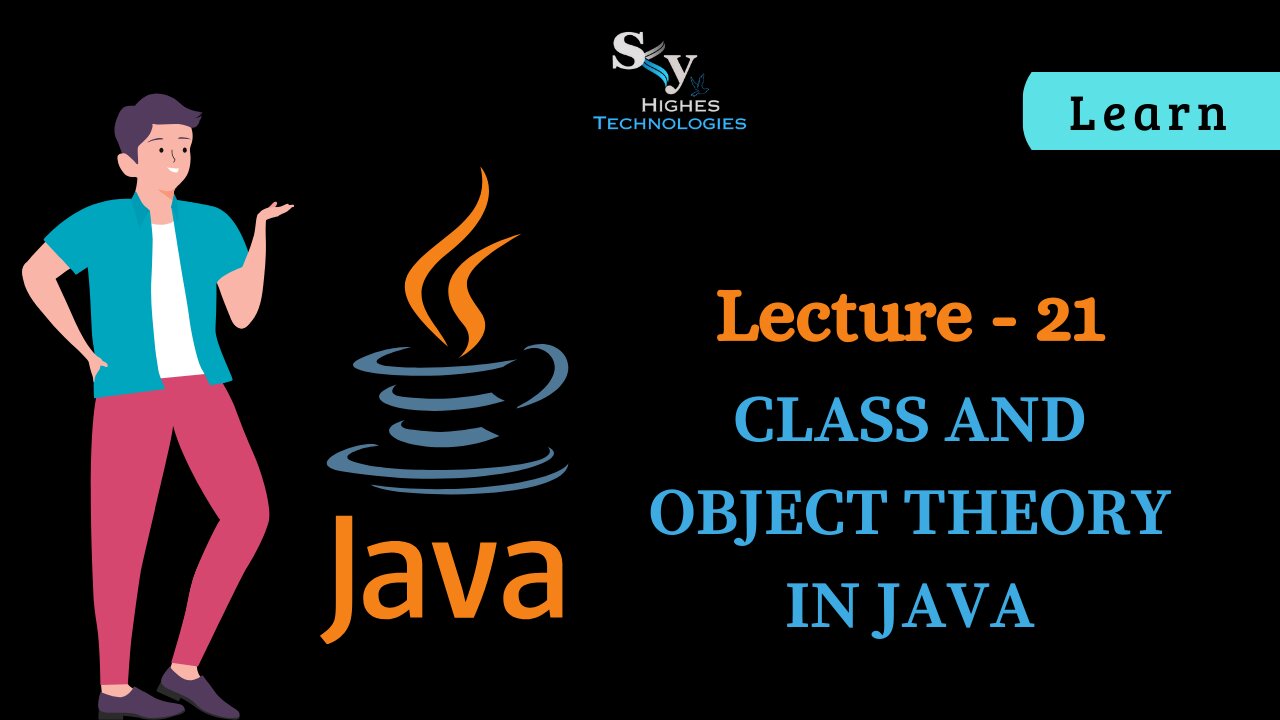Premium Only Content

#21 Class and Object Theory in JAVA | Skyhighes | Lecture 21
Classes and Objects: Foundations of OOP
Object-Oriented Programming (OOP): A programming paradigm that revolves around "objects" as fundamental building blocks. It models real-world entities and their relationships, promoting code reusability, maintainability, and modularity.
Classes: Blueprints or templates that define the characteristics (attributes) and behaviors (methods) of objects. They specify what objects of that class will look like and what they can do.
Objects: Instances of classes. They are concrete entities with specific state (values of their attributes) and the ability to perform actions (methods).
Key Concepts:
Class Declaration:
Use the class keyword followed by the class name.
Enclose attributes (variables) and methods (functions) within curly braces.
Java
public class Dog {
String breed;
int age;
void bark() {
System.out.println("Woof!");
}
}
Use code with caution. Learn more
Object Creation (Instantiation):
Use the new keyword followed by the class name and a constructor call.
Java
Dog myDog = new Dog();
Use code with caution. Learn more
Attributes (Member Variables):
Represent the data associated with an object.
Define them within the class using various data types (e.g., int, String, boolean).
Methods (Member Functions):
Define the actions that objects can perform.
Contain code blocks that operate on the object's attributes and other data.
Accessing and Modifying Object State:
Use the dot (.) operator to access attributes and methods of an object.
Java
myDog.breed = "Labrador";
myDog.bark(); // Output: "Woof!"
Use code with caution. Learn more
Understanding the Relationship:
A class is like a recipe for creating objects.
Each object is a unique instance of the class, with its own set of attribute values.
Objects interact with each other by calling each other's methods.
Benefits of OOP:
Encapsulation: Bundling data and behavior within objects, protecting data integrity.
Inheritance: Creating new classes (subclasses) that inherit properties and behaviors from existing classes (superclasses), promoting code reusability.
Polymorphism: Objects of different classes responding to the same method call in different ways, allowing for flexible and adaptable code.
Remember: Classes and objects are fundamental to OOP and essential for structuring Java programs effectively. Understanding their relationship and properties is crucial for building well-organized and maintainable software.
-
 LIVE
LIVE
Lofi Girl
3 years agolofi hip hop radio 📚 - beats to relax/study to
212 watching -
 2:15:26
2:15:26
Nikko Ortiz
2 hours agoLIVE - Trying Rumble Studio!
169K5 -
 9:30
9:30
Sugar Spun Run
6 hours ago $0.86 earnedBlack and White Cookies
83.6K1 -
 2:45
2:45
SLS - Street League Skateboarding
4 days agoManny Santiago's 'THIS IS 40' Part
47.3K2 -
 6:40
6:40
Homesteading Family
5 days agoNever Make Pie Crust From Scratch Again (Do THIS Instead)
39K5 -
 44:20
44:20
Melissa K Norris
3 days ago $0.72 earnedThe Most Overlooked Way to Preserve Food for Months (No Freezer Needed) w/ Sam Knapp
28.2K1 -
 23:00
23:00
Tony Jeffries
6 days agoThe Best & Worst Boxing Training Methods (Ranked by Olympic Boxer)
20.4K -
 44:44
44:44
Scammer Payback
17 days agoCrazy Confrontation with Hacked Scammer Group
44.2K20 -
 1:15:13
1:15:13
Steven Crowder
4 hours agoIt Isn't Both Sides: They Crossed The Rubicon When They Killed Charlie
430K376 -
 1:26:36
1:26:36
The Rubin Report
3 hours ago'Real Time' Crowd Goes Quiet as Bill Maher & Ben Shapiro Have a Tense Exchange About Charlie Kirk
50.5K61